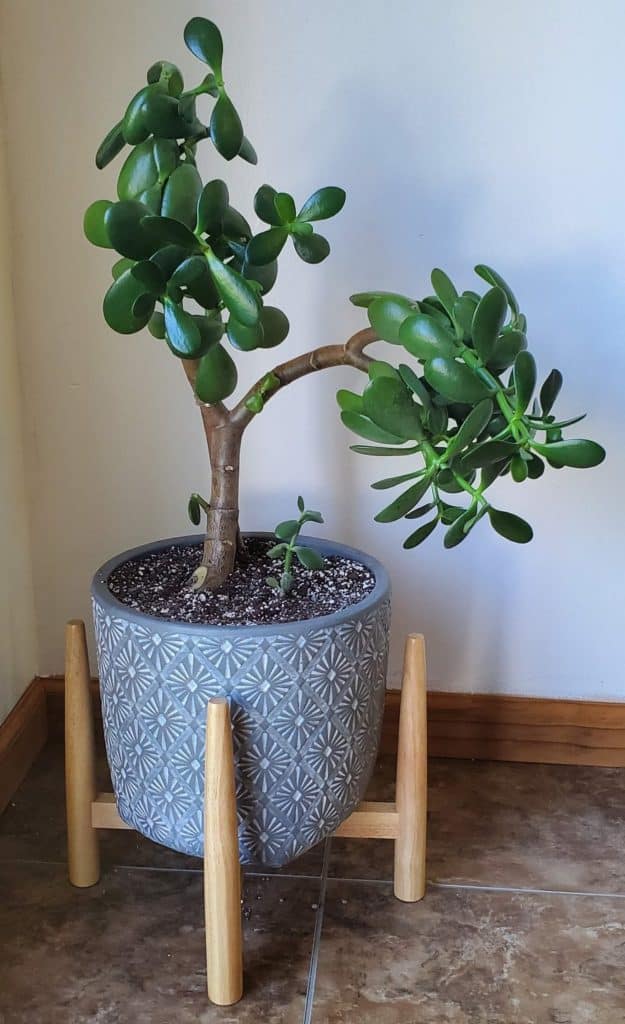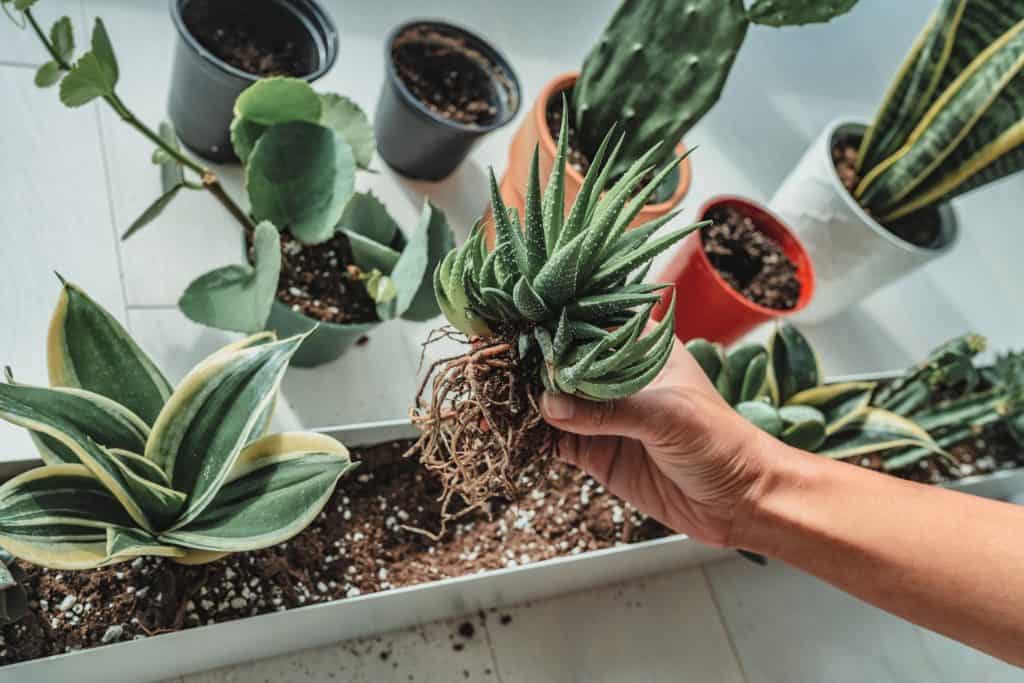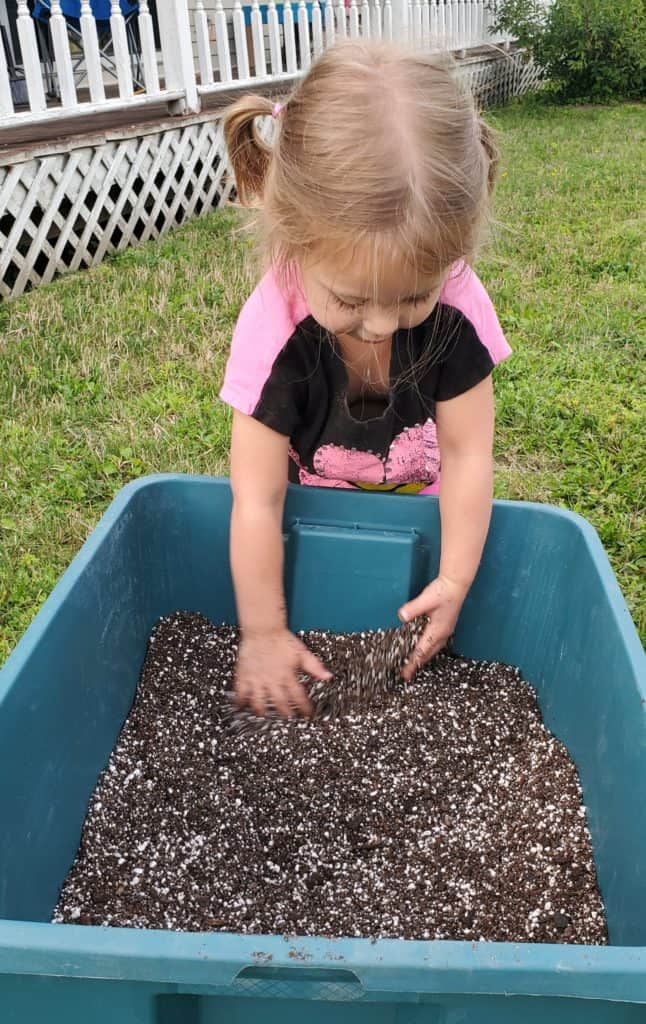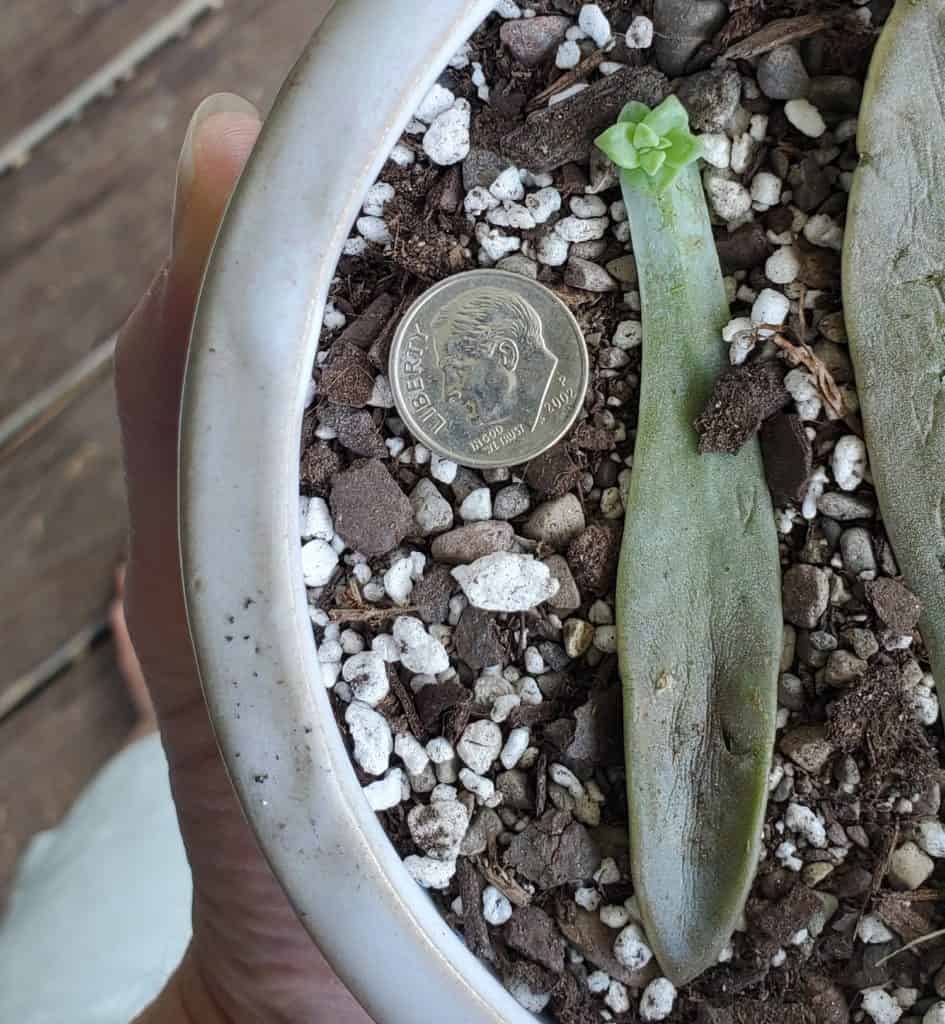How to Revive an Overwatered Succulent (7 Easy Steps)
I absolutely love shopping online for succulents and gardening supplies. If you aren't already saving money by comparing prices online, give it a try! Here are six of my favorite things that I have purchased online as I build my own succulent oasis:
I admit that my succulents didn’t know feast from famine when I first started watering them. Were my succulents getting too much water? Too little? Should I just mist them or drench them? I was drowning in the unknown (and quite frankly, so were they).
My poor plants just needed a bit of consistency from me. After all, caring for indoor succulents is different from caring for outdoor succulents. My indoor plants are fully dependent on me. And that means they have to work with the amount of water I choose to give them.
Now that I’ve been through it all–overwatering, underwatering, misting, and drenching, I’ve learned that there is no one-size-fits-all approach. There are two many types of succulents for me to claim there is only one way to go about this. But I can still help you troubleshoot your overwatered plant and bring it back to good health.
If your succulent is wilted, discolored, and generally looking miserable, it may be a victim of overwatering. Don’t despair! With a little patience and TLC, you can revive your plant and get it back to its former glory. Here’s a step-by-step guide on how to do it.
Sure Signs That Your Succulent is Overwatered
If you’re not already certain that your succulent is suffering from being overwatered, there are a few signs to look for. When my sister brought her 30-year-old jade for me to repot, it showed multiple signs of overwatering such as these:

- The leaves are soft, limp, and discolored (like black or translucent)
- The stem is mushy, rotten, or droopy
- There is mold on the soil or on the plant itself
- The plant is wilting, even when the potting mix is dry to the touch
- The potting mix stays moist for more than three to four days
Underwatered vs Overwatered Succulent
If you’re a new succulent parent, it can be difficult to tell whether your plant is suffering from being overwatered or underwatered. Here are some ways to tell the difference:
Leaves
Overwatered: the leaves of your succulent are soft, mushy, or yellowing.
Underwatered: the leaves of your succulent are dry, shriveled, or browning.
Stems
Overwatered: the stems of your succulent are soft, mushy, or yellowing.
Underwatered: the stems of your succulent are dry, shriveled, or browning.
Soil
Overwatered: the soil of your succulent is soggy, wet, or discolored.
Underwatered: the soil of your succulent is dry, crumbly, or dusty.
Sun/Location
Overwatered: your succulent is located in complete shade or is receiving too little sunlight.
Underwatered: your succulent is located in direct sunlight with no access to rainwater.
Pot
Overwatered: your pot does not have drainage holes or the holes are blocked.
Underwatered: your pot has drainage holes and the succulent’s roots are growing out of them.
7 Steps to Revive a Succulent That Was Overwatered
If you’ve heard someone tell you there is only one way to care for your succulents, then you’ve been told wrong. There are many ways to make the same succulent happy (and the same goes for killing them, too). So if your succulents are overwatered, here are some steps you can take.
Step One: Remove the Plant from the Pot and Check the Roots

The first thing you’ll need to do is take the plant out of its pot. Gently loosen the soil around the roots until you can slip the plant out.
Once it’s out of the pot, take a close look at the roots. Are they mushy or crumbly? If so, they’re probably rotted and will need to be cut away. Healthy roots, on the other hand, should be firm and white or light green in color.
Step Two: Cut Away Any Rotted or Dead Roots with a Clean Pair of Scissors
Use a sanitized, sharp pair of scissors or gardening shears to cut away any rotted or dead roots. Cut as close to the base of the plant as possible without damaging any of the healthy roots.
When I examined my sister’s jade, it was clear that the plant had very few roots left for its size. I did not cut any of its roots since the plant needed any remainders it had left (and they looked pretty healthy).
Step Three: Trim Back Any Healthy but Overgrown Roots by About 1/3
If the roots are healthy but have gotten a bit overgrown, you’ll need to trim them back before repotting the plant. Use sharp scissors or gardening shears to trim off about 1/3 of the root mass. This will help encourage new growth and prevent future problems with overwatering.
Step Four: Allow Your Succulent to Sit in Fresh Air
Don’t rush into putting your succulent back into the soil. Once you’ve trimmed the roots, it’s best to allow the plant to sit in fresh air for a few hours (or even a day or two) before repotting. This will help the plant recover from being overwatered and prevent further damage.
I let the jade sit for about six hours outside on a summer day. Just make sure to shade the plant from direct sunlight to avoid sunburn or drying them out.
Step Five: Choose a New Pot
If your succulent shows signs of being rootbound, or its growth has been inhibited by its current pot, consider sizing up two inches. Otherwise, a pot that is the same size as the current one will work just fine. In some cases, you may need to size down if your succulent was too small for its previous pot.
This is also a great time to make sure the pot has a drainage hole. If it doesn’t, now is the time to drill one or two. Keep in mind that succulents prefer pots with breathable materials like terra cotta, clay, or unglazed ceramics.
Step Six: Repot the Succulent in a New, Dry Potting Mix

Once you’ve trimmed back the roots, it’s time to repot your succulent in fresh potting mix. Be sure to use a mix that drains well—succulents don’t like wet feet! You can even mix in worm castings to help aerate the soil and provide the necessary nutrients that your plant may be lacking.
When you’re ready to repot your plant, be sure to use a well-draining potting mix. I like to use a mix of one part perlite, two parts coarse sand, and three parts potting soil. This ensures that the roots will never sit in water, but will still have access to the moisture they need.
If you’re unsure about the potting mix you have on hand, you can always make your own succulent potting mix.
Step Seven: Water Sparingly Until the Succulent Has Regained Its Strength
Succulents are drought-tolerant plants, so they don’t need a lot of water to thrive. In fact, overwatering is one of the most common reasons why succulents die.
To avoid this problem, water sparingly and only when the soil is dry to the touch. I like to mist my baby succulents often, and deep water my mature plants less often.
Once your plant has regained its strength, you can start watering regularly according to its needs.
Things You Can Do If The Succulent Is Too Far Gone
There are times when a succulent just can’t be revived after it’s been overwatered. If that’s the case for you, here are some things you can do instead.
1. Propagate the Good Portions

Cut away the bad, overwatered stems and leaves and set aside any part of the succulent that is still alive. These can be used to propagate new plants.
2. Make a Succulent Arrangement
If you can’t bear to part with your succulent, turn it into a succulent centerpiece. Simply place it in a shallow dish with some dry sand or gravel and arrange other succulents around it. At least if your plant is on its way out, it can go out with style.
3. Use It as Compost
You can always use your overwatered succulent as compost. Simply cut it up and add it to your compost bin. It will break down over time and provide nutrients for your other plants. Just be sure to remove any roots or stems that are still alive first.
4. Give It Away to Someone Who Can Fix It
If you know someone good with plants, ask them if they want your overwatered succulent. They may be able to revive it and keep it alive. Conversely, you can ask a friend to bring over their green thumb and see if they might revive it for you.
5. Throw It Away
And last but not least, you can always just throw away your overwatered succulent and start fresh with a new plant. No rule says you can’t just wash your hands of it and try again.
No matter what you decide to do with your overwatered succulent, remember that it’s just a plant. It can be replaced, but it’s not worth getting upset over. With a little time and patience, you can either bring your succulent back to life or start fresh and raise a new one.
Related: Succulent Gift Ideas
Is It Better to Overwater or Underwater Succulents?
Hands down, it is better to underwater succulents than to overwater them. While both can cause damage to your plant, overwatering is more likely to kill your succulent than underwatering it.
This is because succulents are designed to store water in their leaves and stems. When they’re overwatered, the excess water drowns the plant and prevents it from being able to absorb the water it needs to survive.
Underwatering, on the other hand, simply means that your plant isn’t getting enough water. While this can cause the plant to wilt and the leaves to turn brown, it’s not as likely to kill the plant as overwatering it. With a little TLC, an underwatered succulent can be brought back to life.
In general, overwatering is more common than underwatering because it’s easy to forget that succulents need very little water. If you’re not sure whether your plant is overwatered or underwater, it’s always best to err on the side of caution and give it a little less water than you think it needs.
How to Prevent Overwatering in the Future
The best way to prevent overwatering is to get into the habit of letting the soil dry out completely between waterings. This can be tricky, especially if you’re new to succulent care, but there are a few things you can do to make it easier.
First, make sure you’re using a pot with drainage holes. This will help ensure that excess water can drain out of the pot and away from the roots of your plant.
Second, use a fast-draining soil mix so that water isn’t sitting around your plant’s roots for long periods.
Finally, try to keep a calendar with each time you water so you don’t second guess yourself and water them again too soon.
Overwatering is one of the most common reasons why succulents die, but it’s also one of the easiest problems to fix. With a little time and patience, you can revive your plant and get it back to its happy, healthy self in no time.
It Takes Time to Revive an Overwatered Succulent
If you’re still not sure whether your plant is overwatered or underwatered, try moving it to a different location and see if there’s any change. If the plant is still struggling, it’s time to take action!
With a little time and effort, you can revive an overwatered succulent and get it back to its former glory. Just remove it from its pot, trim off any rotted or dead roots, repot in fresh potting mix, and water sparingly until it has regained its strength. With proper care, your plant will soon be looking healthy and happy once again.
Related: How to Get Rid of Mealybugs
